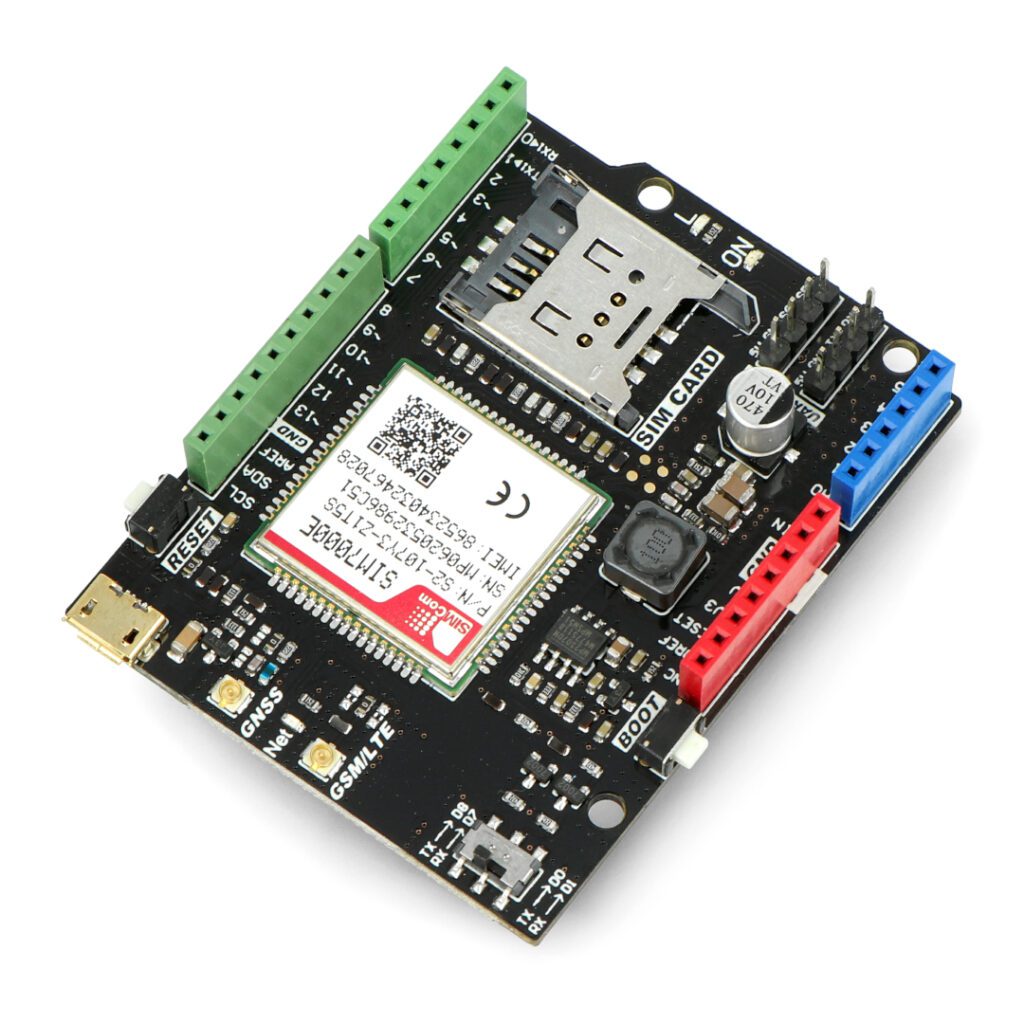Table of Contents:
With the development of navigation, the methods of orientation used have changed. Stellar navigation and the use of compasses have been replaced by advanced systems such as GPS (Global Positioning System) and GLONASS (Global’naya Navigatsionnaya Sputnikovaya Sistema).
Both are based on satellite technology, electronics and correction algorithms.
Compared to traditional methods, they are more accurate and reliable in determining position.
As a result, they are widely used not only for professional purposes, but also in everyday life. They can be found, among others. In smartphones, watches and car navigation.
In addition, we highlight GPS modules that are compatible with Arduino.
They allow you to integrate advanced navigation functions into your own designs.
This in turn provides completely new possibilities when it comes to localization, tracking, or automation.
Arduino GPS application
The easy integration of the two makes it possible for beginners and advanced electronics engineers to create complex navigation systems and then use them for a variety of purposes.
For example, these can range from simple location-tracking applications to advanced robotic projects or innovative geolocation and geoinformatics solutions. Arduino GPS opens up entirely new possibilities for using the technology in many creative ways.
These are not limited to the aforementioned geolocation.
It is also possible to extend projects to include time synchronization, for example.
Basic functions of the Arduino GPS
GPS and GLONASS are designed to provide geographic coordinates.
This allows the precise location of the device on the surface of our planet.
Due to the global satellite coverage, the availability of the location is great, although in some conditions the reception of the signal may be disrupted. Arduino GPS offers quite a few new possibilities for designing smart systems.
These small devices allow projects requiring, for example, advanced navigation or real-time monitoring or tracking.
GPS signals can also be used for the aforementioned time synchronization.
With access to precise atomic clocks located on satellites, the modules allow devices to maintain accurate time.
This is important for a wide range of applications, from security systems to sensor networks in smart cities.
As for the tracking function, the Arduino GPS allows you to create advanced navigation systems that can automatically steer not only vehicles, but also drones or mobile robots.
Tracking the movement of these objects is possible in real time.
This, in turn, opens up entirely new possibilities in security systems, fleet management, or logistics, allowing valuable cargo, vehicles and people to be monitored.
What else can the Arduino GPS be used for?
Another idea for using Arduino GPS is geotagging.
It involves assigning geographic metadata to different types of information.
This can range from photos to environmental measurements.
As a result, it is possible to create geo-information systems with a high degree of sophistication.
They allow data to be analyzed and visualized, taking into account its location.
This, in turn, finds applications in spatial planning, natural resource management and scientific research.
Arduino GPS is also an important tool for creating smart devices that communicate their location.
Such devices can respond to what is happening in their environment and even automatically adjust their operation according to geography.
Examples include smart watches, agricultural irrigation systems, and intelligent transportation systems.
How is the integration of GPS modules with Arduino?
Integration of GPS modules into the platform Arduino greatly expands the platform’s range of potential applications.
The integration process itself is quite simple, so that even people who are new to electronics can start using these devices in their projects.
However, it is worthwhile beforehand to read user guides and sample programs showing the basic ways to use the modules.
These are often provided by manufacturers of GPS modules and greatly simplify the initial steps.
When integrating Arduino GPS, it is necessary to use the documentation and sample codes provided by the developers.
This will help you understand how the GPS modules themselves work and how they should be connected to the Arduino.
A very important issue is power supply.
GPS modules usually require a power supply in the range of 3 V to 5 V.
This needs to be taken into account at the very beginning of the circuit design.
As for communication, most modules connect to Arduino via a serial interface (UART).
This, in turn, involves the need to properly connect the TX and RX pins of the GPS module to the correct pins located on the Arduino board.
Ready-to-use functions for reading GPS data (such as TinyGPS or TinyGPS++) can be found in Arduino libraries.
They greatly facilitate the work with modules, and using them is a way to speed up project development.
Arduino GPS - what capabilities does the integration provide?
One of the key capabilities relates to location and tracking.
With GPS modules, the user can create a device that is able to determine its own position and track the route on which it moves.
This is a useful feature in many applications, such as navigation systems and monitoring devices.
Another capability of the Arduino GPS is to create navigation systems that will be able to direct a user or vehicle to a specific destination.
In addition, the modules can be used to synchronize time.
This will make it possible to maintain precise time on the device, which happens to be useful in many systems.
As you can see, Arduino GPS opens up new horizons for users to create innovative electronic projects.
How useful was this post?
Click on a star to rate it!
Average rating 0 / 5. Vote count: 0
No votes so far! Be the first to rate this post.




















